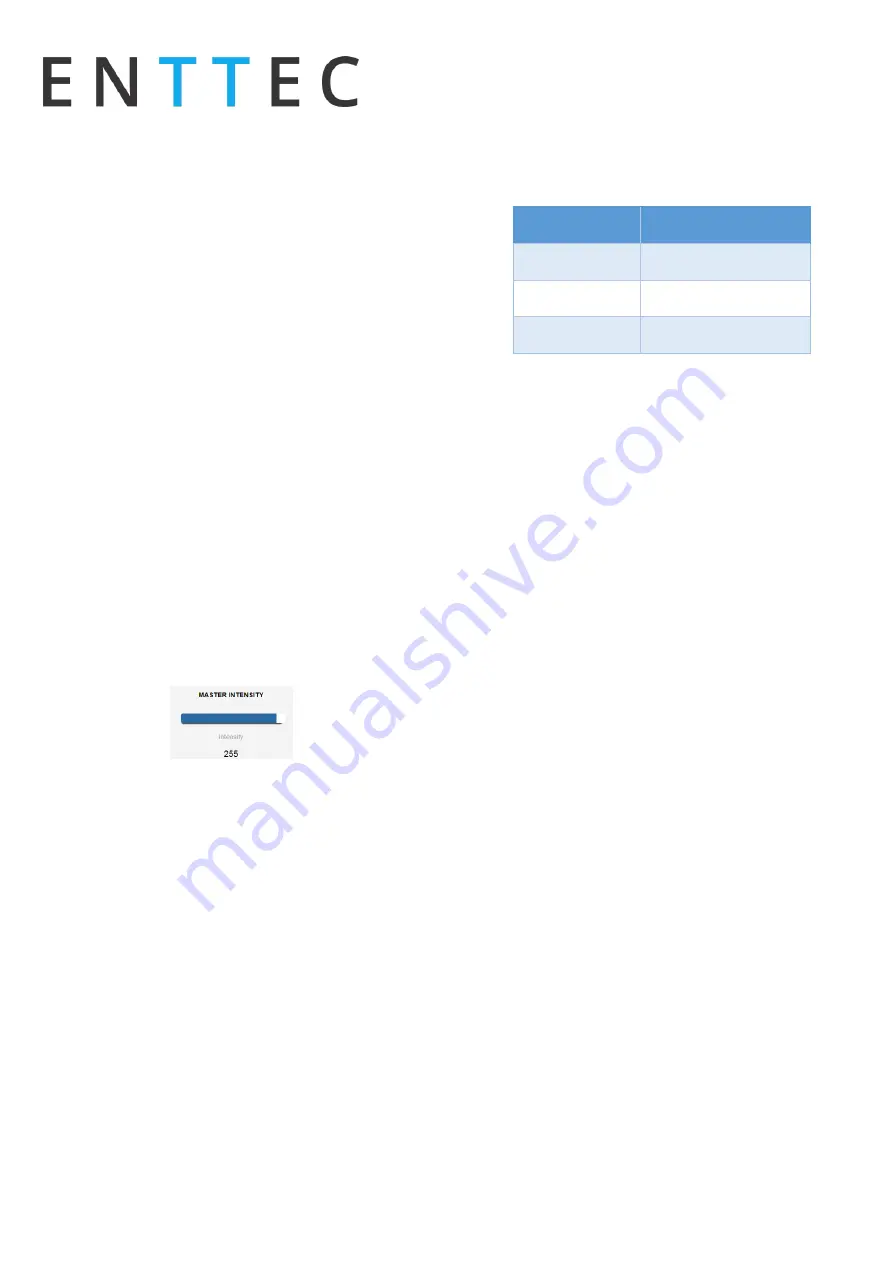
Pixel Octo User Manual
For latest version visit:
www.enttec.com
10 December 2019
M-files ID: 4836041
Page|
9
Background
By only enabling the background layer the Pixel
tape/dots will respond like a standard RGB tape.
The background can be:
•
Set to a constant colour
•
Dimmed
•
Made to strobe
The controllers affect the entire length up to the
maximum possible pixels (e.g. 680 3-channel pixels)
Foreground
This layer creates effects that overlay on the
background colour. The foreground can be:
•
Set to a constant colour
•
Dimmed
•
Made to strobe
•
Set to create patterns
Master Intensity
Controls the overall brightness of the output (both
for foreground and background). Where:
•
0 – no LEDs are switched on
•
255 – LEDs on are at full brightness
Background/Foreground Strobe Frequency
Controls the time between LED(s) on and off time.
•
0 – LEDs switch on and off at slowest speed
•
255 – LEDs switch on and off at fastest speed
Background/Foreground Strobe Duration
Controls the time that the LEDs are on
DMX fader value
On time
0
Always on
1
Smallest duration
255
Longest duration
Wave function
The foreground layer can be controlled to form
patterns of the following wave functions:
•
Sine wave
•
Log wave
•
Square wave
•
Sawtooth wave
•
Rainbow Sine Wave
•
Rainbow Log Wave
•
Rainbow Square Wave
•
Rainbow Sawtooth
Wave Direction
The wave pattern can be set to travel. Wave
direction setting determines which way the pattern
will travel. The wave can be set to move:
•
Forward
•
Backward
•
Mirror out – pattern travelling out of centre
•
Mirror in – pattern travelling into centre

































